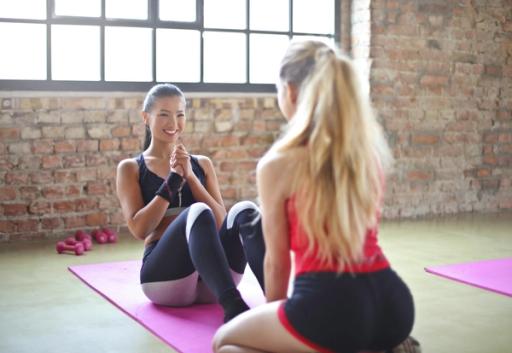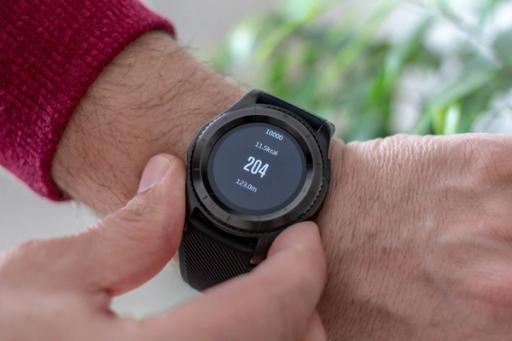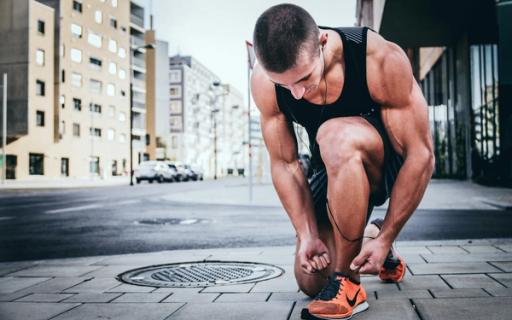
Sit-ups may seem like a small part of your fitness routine, but can significantly affect your overall results. Calorie tracking and management are essential parts of any fitness plan, and using the best app to track macros can help you work to reach your goals. You may wonder how many calories sit-ups burn. This article will help you answer that question for your own body so you can understand the calorie-burning potential of sit-ups and learn practical strategies to enhance core strength for better fitness results.
Cal AI's calorie tracker can help you quickly understand how many calories you burn during sit-ups and other activities. Knowing your unique numbers will help you reach your goals faster, make your workouts more effective, and achieve better results.

Doing many sit-ups daily isn't our idea of a good time. And it isn't exactly the key to weight loss (if that's your goal), either. Although core exercises, like sit-ups, will help increase your overall calorie burn, doing sit-ups alone won't lead to significant weight loss, so there's no exact number you should aim for.
That's because sit-ups are a resistance exercise, not an aerobic exercise. They help tone your muscles but don’t burn many calories or fat or lead to significant weight loss.
The short answer is no; sit-ups and crunches, or any abdominal exercise, do not burn belly fat. Abdominal exercises can help to tone the belly. Sit-ups and crunches are particularly effective for strengthening the core and toning the:
Unfortunately, many people over-engage in abdominal exercises in a misguided effort to burn belly fat. Excessive crunches and sit-ups can stress the lower back and neck, leading to injury.
Forget what you heard about that miracle machine, exercise, gadget, or gizmo designed to rid you of belly fat. Put simply, targeted fat loss—spot reduction—isn't possible. Scientific studies widely back this fact. For example, a 2011 study followed 24 participants over a 6-week training period. They were split into two groups.
The first group completed seven abdominal exercises (2 sets of 10 repetitions), while the control group did not complete abdominal exercises. All participants followed the same diet throughout the study.
The study found that while the exercise group experienced increased muscular endurance compared to the control group, they did not lose any more belly fat than the control group. Another study followed 40 overweight or obese women for 3 months.
All followed the same diet. One group combined this diet with abdominal training, while the control group only followed the diet. Both groups experienced weight loss, but there was no significant difference in belly fat loss between the two groups. So, if sit-ups and crunches don't burn belly fat, what does?
The only way to lose fat from the belly is to reduce fat from the entire body. Think of your abdominal muscles as a window and the layer of fat that covers your abs as a curtain. You can see the ‘window ‘once you remove the 'curtain.’ To shed the curtain, you need to burn calories.
Sit-ups and crunches are tiny movements that strengthen a group of muscles, but because the muscle group is small, working it doesn’t burn enough calories to promote fat loss. To burn calories and lose fat, our body temperature needs to increase, which triggers our metabolism.
Working a small muscle group, such as the abdominal muscles, doesn't generate enough heat for fat burning to begin. In other words, if the muscle group you're working is small, the amount of heat generated will also be small. So, an exercise that creates heat in the body burns more calories and promotes overall fat loss like:
The science of weight management is rapidly changing, and weight loss is more nuanced than "eat less, exercise more." Cutting and burning calories is a key component of weight loss, but there's much more to it. Your ability to lose weight can be influenced by a wide variety of factors, including your:
Talk to your doctor before you make any major changes to your exercise routine (or diet). They can help you determine if your weight-loss plan is healthy and appropriate based on your medical history, health status, and medications.

Sit-ups are a form of calisthenics. This type of exercise uses only your body weight to build strength. Other examples include push-ups, pull-ups, and body-weight squats. Typically, you do one or more sets of a certain number of repetitions and then move on to the next exercise. While wearing a heart rate monitor is the best way to estimate how many calories sit-ups burn, there are other resources you can use. After 30 minutes of calisthenic exercise (like sit-ups), a 155-pound adult burns 167 calories, according to Harvard Health Publishing. Spending 30 minutes doing nothing but sit-ups is unrealistic.
This means you burn just over five calories per minute, depending on your heart rate and exertion. So, let's say you do 100 sit-ups. Assuming it takes 3 to 6 minutes to complete 100 sit-ups, the total burn would be just over 15 calories. Not exactly a game-changer, eh?Granted, the calorie burn range varies due to differences in individual characteristics like body weight and exercise intensity, according to the Mayo Clinic. The more you weigh, the more calories you'll burn doing a particular activity because it takes more energy to move your body through space.
According to Harvard Health Publishing, the calorie breakdown for 100 sit-ups in 3 to 6 minutes looks like this:
You may burn more or fewer calories if you weigh more or less than these numbers.
While we did this math for you, it’s more to make the point that it’s not feasible to shed pounds with sit-ups alone. Thinking about exercise this way is unrealistic and unhealthy, and it’s not the way to lose weight. Burning a pound of fat requires creating a caloric deficit of about 3,500 calories (not everyone responds to the exact calorie cut with the same amount of weight loss, per the American Institute of Cancer Research). In other words, you must burn around this many calories more than you consume.
Burning 3,500 calories through sit-ups alone requires performing an impossible number of reps. If a 145-pound person performs sit-ups at a moderate pace of 20 minutes, they would burn about four calories per minute. To burn 3,500 calories, this person would need to perform sit-ups for 875 minutes and perform an unattainable total of 17,500 sit-ups.
We use MET values to estimate the number of calories you can burn during sit-ups and other exercises. A MET value is a ratio between the working and resting metabolic rates. It represents the energy you use relative to the time you spend doing the activity.
When a MET value is low, this tells you that the activity doesn’t involve expending much energy. For example, a MET value of 1 equals the number of calories you would burn at rest and a MET value of 3 shows that you’d burn 3 times as many calories as you would at rest. It’s important to know that the number of calories you burn heavily depends on your weight and the level of intensity you’re exercising.
The formula that our sit-ups calculator uses to determine the number of calories burned per minute is:
(MET x body weight in Kg x 3.5) ÷ 200. For example, a person weighing 150 pounds will burn approximately 572 calories per hour from doing sit-ups. This activity has a MET of 8, meaning it burns 8 times as many calories as at rest. This is what the formula for calculating the calories burned while doing sit-ups will look like for a 150-pound individual at a MET value of 8.
As we mentioned earlier, you should only do a select number of daily sit-ups to lose weight. Doing hundreds of sit-ups daily is unlikely to move the needle (and is an unhealthy way to think about exercise) regarding weight loss if that's your goal. If you want to test your fitness, someone at an average fitness level should be able to do about 20 to 30 sit-ups per minute, according to SelectHealth. Someone at a higher fitness level might do more than 50 to 60 sit-ups per minute.
It's worth noting that being able to perform many push-ups isn't necessarily a sign you're physically fit. It could mean you're performing the exercise incorrectly, which can lead to muscle or joint injuries. The American Council on Exercise cautions against high-rep abs exercises. If you can comfortably perform more than 25 consecutive reps, the probability is high that you're performing the exercise incorrectly.

Sit-ups are an effective way to improve your core strength. While the exercise primarily targets the rectus abdominis muscle (the “six-pack” muscle), sit-ups also engage the transverse abdominis, obliques, hip flexors, and muscles in the chest and neck. Regularly performing sit-ups can increase muscle tone and improve overall strength in these areas. A strong core supports better performance in other exercises and reduces the risk of injuries.
Performing sit-ups regularly not only tones your core and abdominal regions but also increases your muscle mass in these areas. Adding muscle is important if you want to lose body fat over time since the more muscle you have, the easier it is to lose fat. Strong core muscles improve balance and stability, which can enhance athletic performance and improve your posture.
As you increase your core strength, you may notice better alignment and less strain on your body during workouts and daily activities. This can help reduce the risk of injury and alleviate pain, particularly in the lower back. A 2010 study showed that including sit-ups in workouts positively prevented musculoskeletal injuries.
According to the American Council on Exercise, some people experience pain in their lower back when they do sit-ups. This could be because they’re performed incorrectly or because the hard ground pushes into their spine while they do them. Doing too many sit-ups without working out the opposing muscles can also make your hip flexor muscles very tight, pulling on your back muscles and causing pain.
Traditional sit-ups work your hip flexors more than your abs. If this is a problem for you, try other exercises that work your core, like planks or side planks, along with the glute bridge to stretch the hip flexors.
How to:
Cal AI transforms calorie tracking with cutting-edge AI technology. Just snap a photo of your meal, and we'll do the rest.
Our app combines your phone's depth sensor with advanced AI models to:
With 90% accuracy on visible foods and multiple tracking options like:
We've made nutrition tracking effortless. Whether you're scanning a full meal or a quick snack, Cal AI
Our AI learns from your feedback to improve accuracy. It includes personalized insights and smart reminders to keep you on track. Cal AI makes achieving your fitness goals simpler than ever. Track your calories with your camera using Cal AI's calorie tracker today.